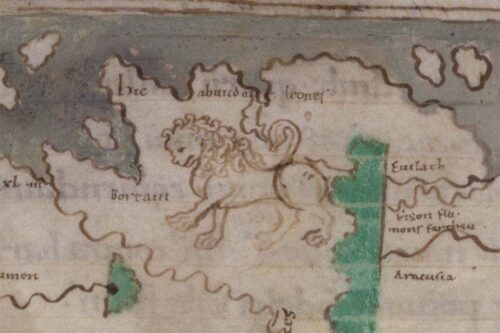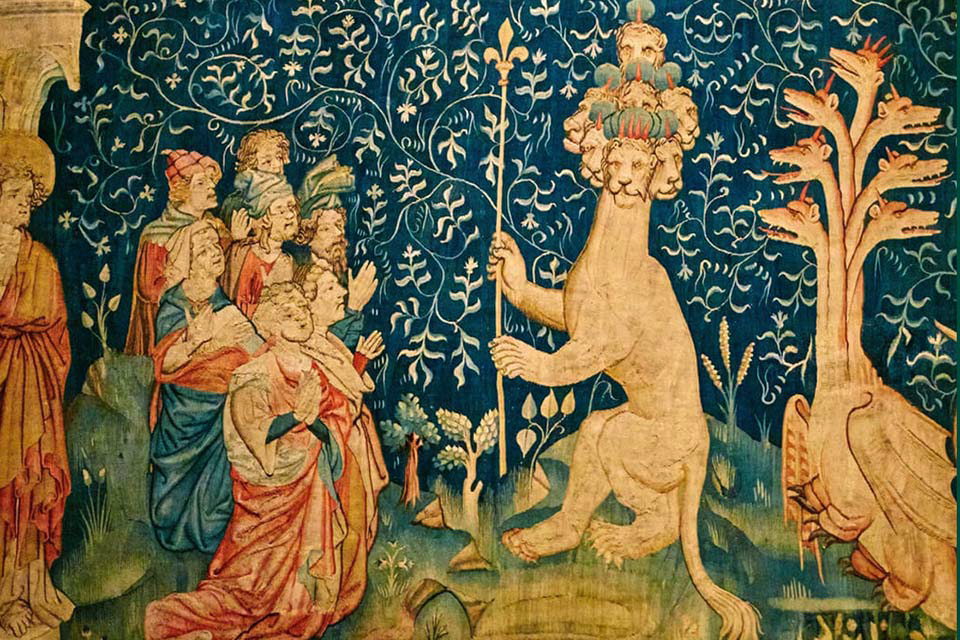In the 1990s, a number of scholars and historians wrote about the impending “Return of the Middle Ages”. At the same time, the famous book by Fukuyama, titled “The End of History” was published. Time has shown that the former writers got it right. We truly live in a time marked by the “Return of the Medieval”.

At the dawn of the Middle Ages, a perfect storm seemed to rise. Climate changes set an end to the so-called Roman Optimum, a period with warm weather. After AD 250, the weather became more volatile, colder, wetter, dryer and more stormy. Likely, this change contributed to the major migrations of the Goths from the North and the Huns from the east in the third and fourth centuries. In the 370s, these two peoples (tribes, nations, bands of brothers) together with their allies collided to the north of the Danube. These events led to a massive migration of Goths across the Danube in AD 376, ending in the annihilation of a huge Roman army in AD 382. Following these events, the Gothic leader, Alaric, invaded Italy. This invasion culminated in the sack of Rome in AD 410.
Afterwards, his successors established the first barbaric kingdom inside Gaul (the Visigothic Kingdom in Toulouse), while another group – the Sueves – settled in Western Iberia. Meanwhile, the Western Roman Empire bled economically to death, trying to pay Germanic mercenaries to stop the Hunnic invasions.
Conventionally, the period between AD 300–500 is termed Late Antiquity to indicate the period as a transitional interim leading to the advent of the Middle Ages. However, as with any transitional phase, the dates are nothing but valuable indicators. The extent to which Roman civic culture continued to set its mark on Byzantium and Early Medieval Europe has been continuously debated.
Nevertheless, we may conclude that several barbaric successor kingdoms were established between AD 500-600, following a climatic collapse in the North and the ravages of the pan-European Justinian Plague. Meanwhile, other historians have worked to understand the religious fervour which led to the unfolding of the great monotheistic religions, Christianity and Islam.
Out of those events grew the political and linguistic fragmented diversity of present-day Europe – a Europe of nations and nation-states often operating on the periphery of a world marked by far-flung empires on the cup of disintegrating. The world seems to fall apart.
Today, we know this medieval world has returned to us:
- Climate change is set to cause worldwide repercussions
- The sixth mass extinction of flora and fauna of the world is happening around us while we try to cope with flooding and wild forest fires
- Covid 19 is just the beginning. Next time will surely be worse
- Following Syria, Russia, led by Putin, is waging a medieval war on a friendly neighbour, Ukraine, inflicting countless heinous atrocities and planning a genocide. All – it seems – to reestablish Russia as an empire and major world player on the international scene
- The globalised market economy is busy disintegrating.
- We have moved from cultured literacy to a world of ephemeral images
- Religious fervour is once again a significant element in people’s lives frightened by the events. Alt-righters shout “Deus Vult” while they storm the Capitol in Washington.
This return of the Middle Ages was already forecast more than thirty years ago by historians and literary scholars like Umberto Eco, Alain Minc, Jan Lindhardt and Norman Cantor (to name but a few)
At present, we watch with horror something both utterly familiar and yet, foreign and frightening: the disintegration of an old enlightened world order where history – we believed – had come to an end. By contrast, we must accommodate a world in which history once more comes afore. In this world, we need to know medieval history as never before.
Hopefully, our readers will find at least some inklings of inroads into this vast and unknown prehistory of our present day at medieval.eu.
But, beware: Hic sunt leones – here be lions – wrote the ancient cartographers on the unknown peripheries on the outer edges of their maps. The Middle Ages is not for the fainthearted. Especially not in the 21st-century-version.
FEATURED PHOTO
Apocalypse. Tapestry from the 14th century at Angers. The adoration of the Beast
This vifnette refers to the text called: The adoration of the beast.
“And I saw a beast rising out of the sea, with ten horns and seven heads, with ten diadems upon its horns and a blasphemous name upon its heads. And the beast that I saw was like a leopard, its feet were like a bear’s, and its mouth was like a lion’s mouth. And to it, the dragon gave his power and his throne and great authority.” The beast represents powerful paganism, the Antichrist that persecutes the church. Satan gives it the scepter of royalty and thereby the mission to fight the faithful..
READ MORE:
Inventing the Middle Ages.
By Norman F. Cantor.
Quill, New York 1991
Le Nouveau Moyen âge
By Alain Minc
Gallimard 1993
Frem mod Middelalderen – det levende billede i det åbne rum
By Jan Lindhardt
Gad 1993
The return of the Middle Ages
By Uberto Eco
In: Travels in Hyperreality
Harper Via 1986
